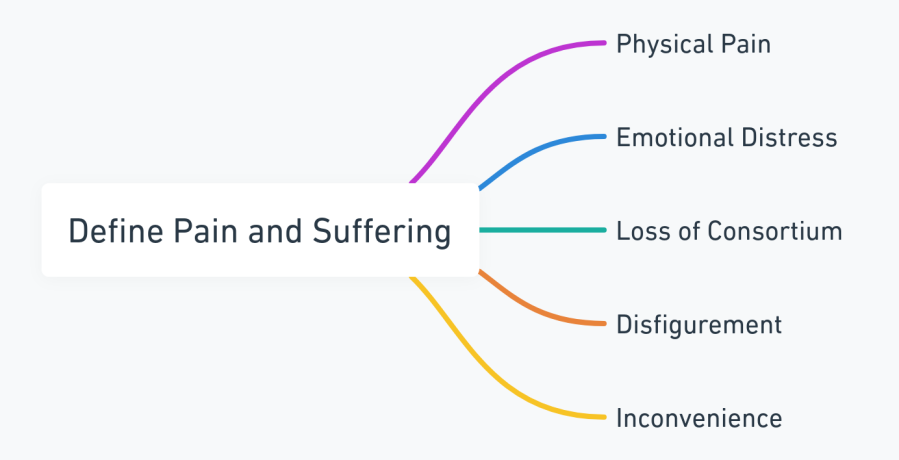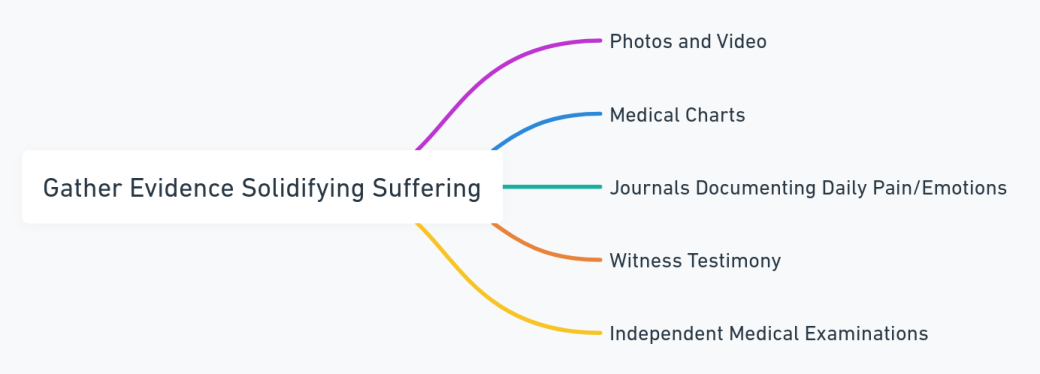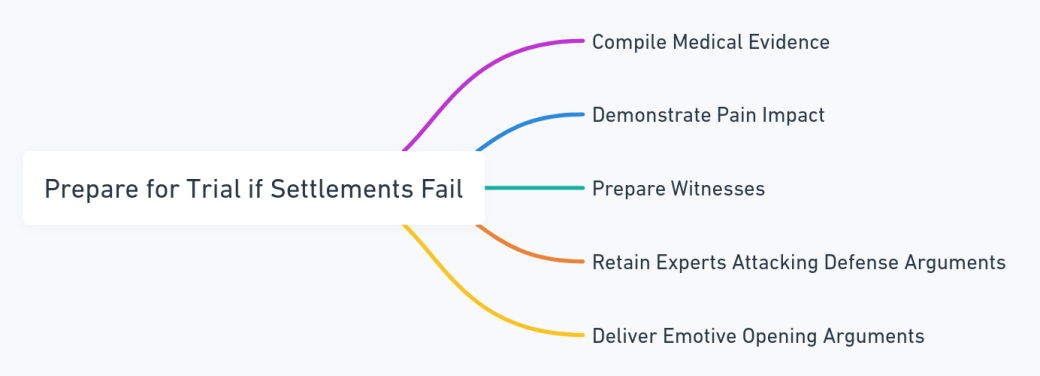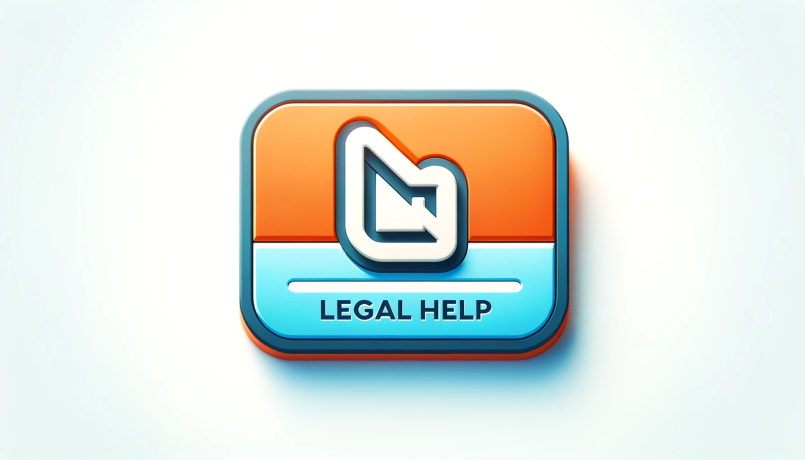
Struggling with the aftermath of an accident? Learn about claiming compensation for your pain and suffering and understand the steps to get the settlement you rightfully deserve.
by LawInc Staff
January 19, 2024
When an accident caused by someone else’s negligence results in physical injury or trauma, tremendous hardships often follow. Beyond medical bills and lost income, immense physical pain and emotional distress emerge which merit compensation.
Here, we examine the crucial element of “pain and suffering” within personal injury legal claims. Core facets like quantifying distress, maximizing damage awards and settlement tactics get explored to empower victims recovering deserved reparations.
1. Define Pain and Suffering

Key components of pain and suffering in personal injury claims.
-
- Physical Pain: Injuries causing ongoing discomfort warrant financial redress.
- Emotional Distress: Trauma leading to personality changes, lost enjoyment of life activities merits compensation.
- Loss of Consortium: Partners losing intimacy abilities due to negligence deserve damages consideration.
- Disfigurement: Scarring from wounds or post-surgical alterations constitute qualifying appearance damage.
- Inconvenience: Struggles from inability performing routine self/family care brought by injuries constitute compensation grounds.
Examples:
-
- John still felt back pain 5 years post-collision.
- After facial laceration surgery, visible scarring upset Brenda’s self-image.
- Years of physical therapy never fully restored mobility for LaTasha’s injured hip.
- Side effects of pain medications disrupted intimacy between Carol and her husband.
- Lingering concussion symptoms made reading difficult increasing life frustrations for Jamal.
How to Proceed:
-
- Note all accident effects through post-traumatic course of treatment.
- Have doctors document physical, emotional and life impact in clinical records.
- Discuss pain scale levels across time with legal team.
- Highlight specific enjoyments lost due to ongoing medical problems.
- Help lawyers fully grasp suffering extent through verbal depictions, visual aids like photographs.
FAQs:
-
- What is most influential in determining pain and suffering damages? Severity, permanence and duration of injuries/ trauma per medical proof.
- Can pain and suffering cover losing one’s career? Yes, if accident caused termination or required switching to much lower-paying jobs.
- Do insurers use computer formulas estimating general damages? Many rely on software, but skilled legal negotiations still greatly impact claimant payouts.
- What future effects warrant inclusion beyond just current pain? Continued treatments projected, loss of mobility, PTSD, fertility issues from crash trauma.
- Can defendants claim settlements exaggerated subjective pain reports? They try discounting unpaid damages but strong clinical corroboration overcomes credibility disputes.
2. Quantify Pain and Suffering Losses

Approaches to assess pain and suffering losses.
-
- Compare Similar Injury Case Histories: Use past legal precedents as starting frameworks.
- Factor Life Impact: Assess enjoyment, relationship detriments across timelines.
- Assign Daily Monetary Value: What’s reasonable compensation for daily anguish, inconveniences when aggregated?
- Account For Future Unknowns: Surgeries, rehabilitation needs may still arise increasing suffering.
- The Younger the Victim, the Higher the Multiplier: More remaining years in pain mean bigger claims.
Examples:
-
- Vertebral fractures in comparable cases led Paul’s lawyers to seek $650K initially.
- Unable to dance anymore, Maria’s life passion was wholly disrupted by clumsy defendant.
- $400 daily seemed just addressing ongoing spinal cord injury effects per economist expert retained.
- Doctors warned Lucy additional surgery may still follow to fully repair detached retinas.
- Maximum multipliers applied for teenager Joey paralyzed half a century ahead.
How to Proceed:
-
- Have physicians detail suffering levels through percentage disability assignments.
- Note medication dosages, therapies undergone, hospital/ ICU days when conveying agony extent.
- Prepare to justify numbers sought; don’t expect initial demands accepted unconditionally.
- Describe how activities, relationships changed post-incident to establish emotional distress claims.
- Engage economic analysts projecting future costs incorporating life expectancy variables.
FAQs:
-
- What degree of detail is required substantiating general damages? The more tangible metrics like rankings, economic reports provided, the better claim corroboration.
- How much of settlement payouts fund just pain and suffering versus special damages? Varies widely, but at least 30-50% targets non-economic losses for serious injury suits.
- Can defendants access our social media activity refuting suffering claims? Possibly; so notify lawyers about accounts needing privacy adjustments limiting discoverability.
- What if new unexpected medical issues emerge years post-settlement? Usually no recourse unless structured pacts allowing future claim petitions were negotiated initially.
- How long do claimants getting lump sum payouts have before taxes apply? General damages face no income tax; only special damage portions like lost wages qualify as taxable income federally.
3. Gather Evidence Solidifying Suffering

Key evidence types for proving suffering in personal injury cases.
-
- Photos and Video: Show visible injury aftermath plus activity limitations.
- Medical Charts: Doctor/hospital visit notes prove diagnosed conditions, prescribed treatments.
- Journals Documenting Daily Pain/Emotions: Specific dated logs further boost credibility.
- Witness Testimony: Have friends, co-workers observe, validate personality shifts.
- Independent Medical Examinations: Use neutral specialists confirming injuries, limitations.
Examples:
-
- X-rays showed Pedro’s cracked pelvis post-collision.
- Therapist notes proved Katrina’s disturbing visions stemming from crash sight of dying passengers.
- Martin videotaped struggles dressing himself each morning showcasing mobility deficits.
- Coleen’s mom could attest seeing her daughter withdrawn perpetually after dog bite laceration.
- Orthopedists concurred regarding long-term knee damage prospects per their clinical exams.
How to Proceed:
-
- Catalog images/videos early before wounds heal to document clearly initial severity.
- Submit expansive medical authorizations helping attorneys gather complete records.
- Note medication changes, dosages adjustments indicating prolonged afflictions.
- Have close acquaintances describe personality, engagement transformations post-incident.
- Undergo independent medical exams by reputable specialists to reinforce injury legitimacy.
FAQs:
-
- What if gaps exist in my medical treatment history? Explain any reasons for interruption like insurance denials, logistical barriers.
- How much do juries award for say loss of limb/digit suffering? Millions potentially but specific career impact, complications extent greatly affects justice realizations.
- Can defendants access our psychotherapy progress notes without consent? Only via court orders with attorneys present ensuring sensitives stay shielded.
- What if friends embellish personality transformations They observed post-accident? Stress corroborating clinical mental health diagnoses and simply using lay observers as suffering gauges.
- Is extensive treatment always necessary for general damages? Severe temporary pain merits awards too even sans long-term care.
4. Make Settlement Offers and Demands

Effective tactics for negotiating settlements in personal injury claims.
-
- Start High: Negotiations involve concessions so pad initial figures.
- Highlight Lowered Quality Of Life: Pain that curtails life enjoyment deserves higher valuations.
- Send Clear Demand Letters: Specify settlement amounts sought and unwillingness to bargain down beyond minimums.
- Remain Professional: Aggressive demands may compromise court room credibility later if unreasonable.
- Allow Time: Insurers rarely offer maximum authority levels initially. Have patience re-negotiating.
Examples:
-
- Frank’s counsel sought $1.2M though similar brain injury cases averaged below $900K.
- Maria’s destroyed ballet career factored into large consortium demand.
- Initial letters formally asked for $500K documenting Joan’s pneumonia exacerbation from sidewalk slip and fall.
- Rather than vent, Carol’s attorney stuck with technical severity descriptions sending figures to adjuster.
- Josh awaited second round counter-offers after insurers’ usual nominal first bid.
How to Proceed:
-
- Highlight lowered quality of life factors warranting higher non-economic damages.
- Have attorney arrange structured settlement if wanting income stream rather than one-time payment.
- Consider binding arbitration circuits to resolve settlement impasses.
- Prepare to justify numbers through presentation of strong medical proofs and economic data.
- Be ready to compromise within reasonable parameters – rarely do claimants get full initial requests.
FAQs:
-
- Will my lawyer guide negotiations or leave final settlement approval fully to me? Ethically we control decisions but attorneys advise strongly on deals.
- What is typical settlement time frame? Simple cases resolve in months. Serious suits often take years fully negotiating general damages.
- How much of payouts generally fund attorney fees? Contingency fees range 30-45% on avg but expenses also deducted minimizing profits.
- Can defendants request independent medical exams to counter our physician findings? Yes and second opinions sometimes even ordered by courts before trial.
- What future income loss merits inclusion beyond just pain and suffering claims? Decreased earning capacity if disability Hinders victim’s career advancement trajectory.
5. Prepare for Trial if Settlements Fail

Essential steps to prepare for trial when settlements fail.
If reasonable compensation offers get rejected by unreasonable insurers, court may be necessary as last resort ensuring justice is served.
-
- Compile Medical Evidence: Collect physician testimony, documentation conveying injuries.
- Demonstrate Pain Impact: Use logs, journals to chronicle limitations faced.
- Prepare Witnesses: Align close acquaintances describing personality/lifestyle changes observed.
- Retain Experts Attacking Defense Arguments: Undercut excuses dismissing/minimizing pain claims.
- Deliver Emotive Opening Arguments: Juror connections drive higher verdicts.
Examples:
-
- Specialists testified confirming Joan’s spinal damage contributing to ongoing mobility deficits.
- Victor referenced specific activity loss journal entries when conveying dilemma to jury.
- Close university friends described withdrawal observations after Amanda’s assault.
- Orthopedists denied defense notions downplaying knee deterioration prospects post automobile collision.
- Opening remarks recounted young Dawson’s loss of promising athletic career from leg fractures.
How to Proceed:
-
- Prepare clients for cross-examination challenges to injury claims.
- Use multimedia to bolster descriptions of pain, distress when testifying.
- Have neuropsych experts disprove brain damage minimizations by defense doctors.
- Highlight monetary amounts only briefly – juries dislike perception of greed.
- Remind jurors of civic duty to fellow community members during closing arguments.
FAQs:
-
- What portions of defense medical exam documentation can plaintiffs access? Records and conclusion exchanges mandatory for transparency.
- How influential is crying during testimony? Cathartic but moderated emotions prevent appearance of manipulation some jurors may resent.
- What case components hold greatest trial weight? Medical evidence, economic loss data, defendant admissions of some liability.
- Can past damage award patterns predict future jury verdicts? Historical benchmarks useful but each claim’s distinct facts sway optional jury compassion.
- What happens if jury only finds minimal liability? Awards get reduced by defendants’ attributed fault percentage.
Summary
Pursuing fair pain and suffering restitution helps transform victims’ mindsets from helpless to empowered. But undertaking this journey demands courage through lengthy proceedings before ultimately reaching case closure. With determination, the law seeks to make claimants whole again – as best as possible.
Need a Personal Injury Lawyer? Contact Us.
If you or a loved one suffered harm due to another party’s provable negligence, contact us to connect with an attorney who can analyze your situation, guide negotiations and fight for maximum compensation if warranted.
An experienced pain and suffering compensation attorney can advise if your situation merits viable legal action, estimate claim value ranges, craft persuasive demand letters and vigorously negotiate resistant insurers – or prepare strong courtroom arguments before a jury ensuring the at-fault defendants fully account for the suffering caused.
Disclaimer
This article presents general personal injury law information. Consult qualified legal counsel for guidance on your unique injury claim and associated pain and suffering loss recovery rights in your specific state. Many factors influence individual case results so we cannot guarantee particular legal outcomes.











